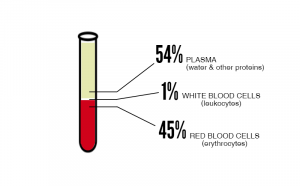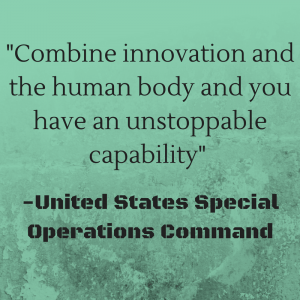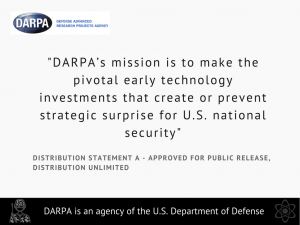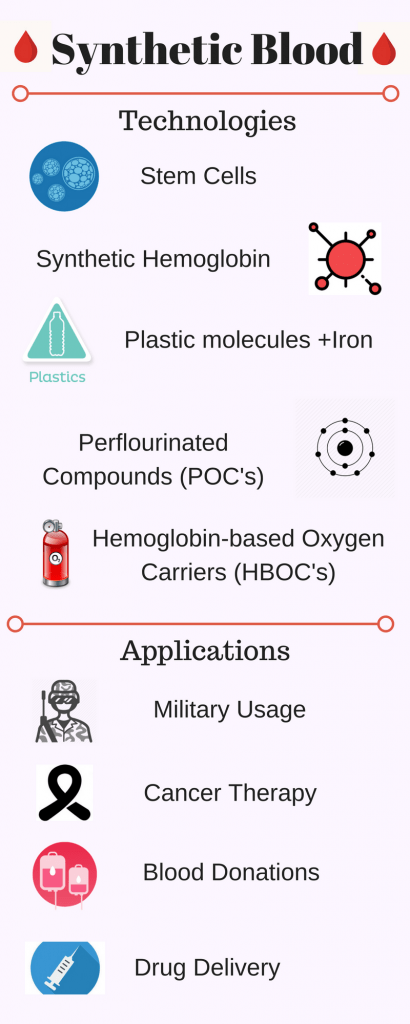
Figure 1. An Infographic created via Canva showing the various technologies used to create synthetic blood, and the possible applications of synthetic blood.
The advancement of modern technology has made the ability to construct artificial tissue and organs possible for those who are in need. Namely, synthetic blood research has been an area of significant interest due to the global blood shortage stemming from a lack of safe blood from donors (Grossman, 2016) and need for alternative medicine. Researchers hope to replicate the function and properties of real human blood in order for it to be more accessible, safe, immediate, and effective. There are many synthetic blood technologies that serve different purposes.
TECHNOLOGIES: The infographic briefly displays the many different ways synthetic blood is made and how it can be used (FIGURE 1). These technologies include the production of red blood cells or blood-like substances from stem cells (Trakarnsanga, 2017), synthetic hemoglobin (HBOCs; Buehler et al., 2010), chemical molecules (PFCs; Riess, 2006), and even plastic molecules (The University, 2009). Furthermore, blood can be engineered in ways that surpass
blood’s normal function of oxygen delivery. T-cells, a component of blood, can be engineered and modified to prevent the development of malignant tumors for therapies to treat cancer (Kochenderfer, 2010; Sharpe and Mount, 2015).The development of this type of synthetic blood use may result in a paradigm shift in the way we treat cancer and advance the field of medicine immensely. Alternatively, a study funded by the U.S. Department of Defense, Defense Advanced Research Projects Agency (DARPA), highlighted the potential to engineer blood cells to act as antidote deliverers, in the hopes to neutralize toxins for soldiers exposed (Shi et al., 2014). This could potentially be a groundbreaking technology that would save many lives of soldiers during chemical warfare. (See sections “History of Blood” and “Science of Blood” for more information).
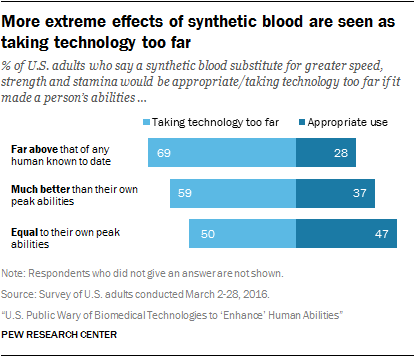
Figure 2. Results of a 2016 survey of U.S. adults about their opinions on synthetic blood technology. They rated the potential usage of synthetic blood for human enhancement as either taking technology too far or using the technology appropriately. Image from Funk et al., 2016. The author gave us permission to use it.
ETHICS: In the flourishing society model for ethical issues related to biotechnology, potential controversial technologies are considered in a context where the good of the society is prioritized. Aristotle’s idea of human flourishing being the pursuit of a things function or state is relevant when we think of new technologies impacting human life. Here, the “good” state or function of synthetic blood ultimately should benefit human society by pursuing an ideal flourishing, happy state of life where there is less suffering, and more health. Funk et al., 2016, reported that more extreme functions of synthetic blood, such as enhancing strength and stamina may take the technology too far (Figure 2), and possibly create a dystopian society where humans who obtain this technology become superior. (See section “Ethical Discussions” for more info).
MILITARY BIOTECH APPLICATIONS: The application of synthetic blood and other biotechnologies have been of interest to the United States Military. The need for large amounts of blood transfusions on site is crucial for military operations on site. Additionally, new technologies that use red blood cells as an anti-toxin for soldiers exposed during chemical warfare is are also being invested by the U.S. government. Lastly, TALOS – Tactical Assault Light Operator Suit – is a developing technology pursued by the United States Special Operations Command to create a “super solider” used to enhance military operations. (See sections “TALOS” and “Ethical Discussions” for more information).
TALOS

Figure 3. The soldier of the future will be a “super soldier” in a new and improved armor. Source: Thompson, C. (2014, May). The future soldier will be part human, part machine. CNBC. Retrieved from http://www.cnbc.com/2014/05/14/the-future-soldier-will-be-part-human-part-machine.html.
TALOS―the Tactical Assault Light Operator Suit is also an advanced armored exoskeleton being developed by the United States Special Operations Command (SOCOM).The idea for TALOS came from Navy Admiral William McRaven in 2003 following the death of an operator in combat in Afghanistan. (Miles, 2014) Admiral McRaven envisioned an armored suit that would offer operators better ballistics protection, monitor physical conditions inside the suit, and even augment the operators’ strength and endurance. The Defense Advanced Research Projects Agency (DARPA) is leading the research and development of TALOS in efforts to actualize stronger and faster operators, or so-called “super soldiers”.
TALOS is designed with many features including improved head and neck protection, a data collection mechanism, biosensors, liquid armor, and a reengineered exoskeleton. The “heads-up display” feature is intended to provide real time mission updates, for example on enemy location. The biosensors can provide information on the operator’s heart rate, body temperature, and hydration levels, allowing forces to better respond the soldier’s physical condition. (Tucker, 2015) Typically, armor weight is one of the greatest challenges to operators mobility and endurance but TALOS is designed with a “liquid armor” that remains light and moldable until any magnetic field or electric current is applied then solidifies within milliseconds. “Liquid armor” is much lighter than the armor used now weighing between 9 and 12 pounds per square foot. Nevertheless, the exoskeleton is the most relevant advancement to an ethical analysis. The exoskeleton is designed to distribute load or “assault” weigh as it is referred to by SOCOM, enhance muscular strength, and amplify speed and agility. The TALOS, which is on schedule to begin testing in August 2018, as planned would open many possibilities for a lighter, stronger, faster “super soldier”. The image below maps out the design for the Tactical Assault Light Operator Suit.
Science of Blood and Synthetic Substitutes
Blood is a mixture of red blood cells, white blood cells, platelets, and plasma. The blood that runs through our bodies appears red in color but the majority of it is actually 54% plasma which appears slightly yellowish in color (Dean, 2005). This plasma mainly consists of water, sugars, fats, and various proteins that work throughout our bodies (Dean, 2005). The next component of blood is made up of white blood cells and platelets. White blood cells are the foundation of our acquired immunity and they protect us from foreign bacterial or viral infection. Platelets are molecules that function in the clotting of blood. Lastly, the red blood cells (erythrocytes) are the most common type of cell found in the blood and work to carry oxygen all over our body (Dean, 2005). Mature red blood cells have their nucleus ejected causing them to have a centrally curved shape. This shape allows them to store more of the protein hemoglobin which actually binds oxygen so that it can be transported around the body (Dean, 2005). Blood has many jobs that it does very well and that is what makes it difficult to create a suitable blood substitute.
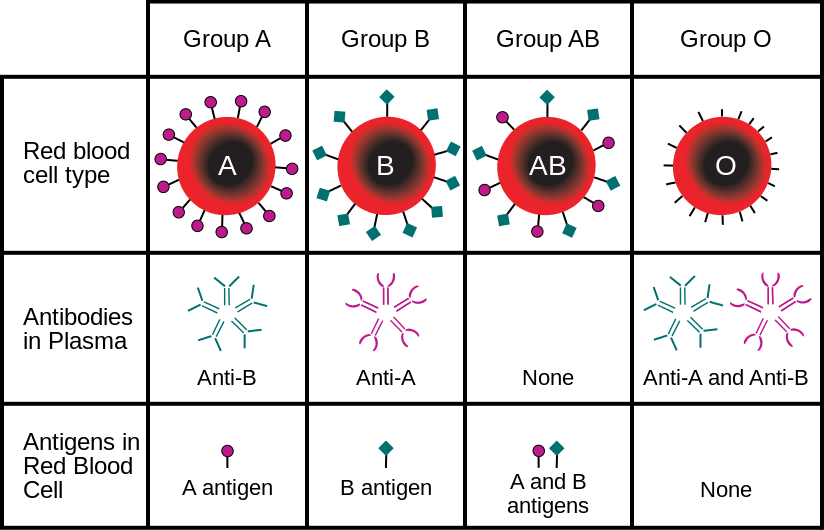
Figure 5. Table showing the different blood types in humans, along with their specific antigens and antibodies.
The benefits of synthetic blood are that the blood would inherently be type O negative and be able to be given to everyone. They could also be designed to be sterilized making it extremely safe to use without the worry of transmitting disease as well as a shelf life of three years without refrigeration (Artificial Blood.). This would allow for stockpiling of blood and a decreased need for blood donors and the ability to have more than enough blood in case of an emergency. The current way that blood substitutes are made are either by using hemoglobin-based oxygen carriers (HBOC) or PFC’s.
PFC (perfluorocarbon) emulsions are cheap, biologically inert, and can dissolve 50 times more oxygen than blood plasma, but still far less than hemoglobin(Sarker, 2008). The practicality of these compounds comes from the fact that they do not require any biological entities in their production (Sarkar, 2008). Because of this, PFCs are extremely easy to make without expending biological materials and keeping production costs lower. Another positive factor to be considered is how they can cut out the risk of transmitting disease through blood transfusions (Sarkar, 2008). PFCs are known to be decently effective in their treatment, but many are still undergoing clinical trials before they can be placed on the market. They do not mix well with blood so they need to be emulsified first, then they can be mixed (Spahn, 1999). Some examples of PFC blood substitute products include Fluosol-DA-20, Oxygent, Perftoran, Oxycyte, and PHER-O2 (Pacific, 2016).
This necessary emulsifying step is where HBOC’s have the advantage. They are either made with isolated hemoglobin, or synthetically made hemoglobin, which makes them have a more natural function. However, the hemoglobin must be modified to remain stable within the bloodstream and are crosslinked using PEG. When using HBOCs, there is no risk of getting a person’s blood type incorrect like during a blood transfusion. Since these HBOCs are just hemoglobin proteins, they are not bound to a red blood cell that expresses blood types A,B, or O (Sarkar, 2008). Both solutions only last about 20-30 hours in the body before they are filtered out where whole blood lasts up to 34 days (Sarker, S.). This makes it well suited for drug delivery and treatments. Some examples of HBOC blood substitute products include Hemopure, PolyHeme, MP40X (Hemospan), Hemotech, and Engineered Hemoglobin (Pacific, 2016).
Research is currently being done to modify T-cells to recognize lymphoma and eradicate the cells. The T-cells are modified to express chimeric antigen receptors (CARs) that recognize tumor cells. Blood goes to every cell in the body and this makes them ideal for drug transport and delivery. The cells can target specific cells and then be removed naturally by the body. This has many applications and is being looked at by the military for use by soldiers in the field. It opens the possibility of better medical aid during deployment as well as the chance for enhancements.
History of Blood
A replacement for blood has been sought after for over a hundred year and specially during the early to mid-twentieth century. An even larger strain for a replacement came because of the advancements in medical science as well as because of World War 2, the Korean War, and Vietnam War and the 1990’s because of the outbreak of AIDS. However, with all this time and effort given to creating a blood replacement efforts have been unsuccessful. Different fluids were attempted like beer, urine, and animal blood. Milk was used as a blood substitute in 1854 as a treatment for Asiatic Cholera and was deemed successful and safe (Sarker, S.). Later, saline solutions were tested on frogs, and developed into a blood plasma volume expander, but the frogs could only live a short time with no actual blood in their system (Sarker, S.). And in World War II, coconut water was used as a blood plasma expander because of its purity and nutrient proportions. Experiments in the 1960’s tested perfluorochemicals (PFC) and due to the of the complexity of blood, were unable to make a proper substitute. The PFC’s allowed mice to live for a few hours with just a PFC emulsion in their systems and fully recover after the blood was replaced and, in the 1980’s, a PFC called Fluosol was the only FDA approved blood substitute that has ever been made for humans in the United States (Gould, S. et. al.). So far none of the substitutes have bee successful at completely replacing blood in all of its functions.
It is worth noting that at this time, “artificial blood is designed for the sole purpose of transporting oxygen and carbon dioxide throughout the body” according to Suman Sarkar at IMS Banaras Hindu University. This means that the technology is beginning to gain a footing in today’s society. New advances in technological development of synthetic blood could lead to a perfected system for producing large amounts of O negative blood from stem cells. This would allow for large scale treatment for those that require blood transfusions. Later additions of technology to synthetic blood such as nanotechnology could serve as a go to management for our circulatory system. This technology could be used for fast healing, drug delivery, cancer treatment, and many other uses regarding circulatory system usage.
Ethical Discussions
Approaching the discussion of TALOS through a flourishing societies framework allows us to plan proactively for a future in which TALOS brings about good. Aristotle’s first principles allow us to determine what is the ideal functioning for TALOS and Martha Nussbaum’s capabilities contribute to the discussion as well. Life, bodily health, and bodily integrity are the most relevant to TALOS at present. Insofar as TALOS protects soldiers, allowing them to return home safely and live until the end of their natural life, TALOS has satisfied the basic “life” capability. To meet the bodily health capability, TALOS should promote better care for the soldiers on mission. Some planned features in TALOS, for example the hydration level monitor, directly benefit soldier’s health. In meeting the bodily integrity capability, TALOS protects soldiers as they move place to place on a mission. The liquid armor to stop ballistic offense will promote greater integrity, leaving the operator’s free from assault or injury. As TALOS continues to progress through the stages of planning and testing, we should consider the extent to which this technology is bringing us closer to a happy, healthy, flourishing society.
In the media almost every TALOS report makes reference to Tony Stark’s Iron Man. Here, they claim, science fiction meets reality. An NPR clip titled “Special Ops Envisions ‘Iron Man’-Like Suit To Protect Troops” introduces the common comparison between TALOS and Iron Man.
Iron Man is society’s closest comparison for the TALOS expectation. Would “super soldiers” in TALOS become superheros as Iron Man did in his quest to fight crime and terrorism? In “Not Exactly of Woman Born” Suzan George comments on science fiction film as a reflection of society’s anxieties and concerns about emerging technology. Iron Man was released in 2008 before the TALOS program was announcement in 2013 but the two have quickly become associated with one another. The Iron Man association could actually improve the social acceptance of TALOS. If Iron Man is a hero that helps society achieve its ideal, flourishing state perhaps a man-machine TALOS will do the same.
Given the TALOS prototype is successful, further advancements in the technology it implements are highly likely. According to the Pew Research Center, the military has already initiated research into synthetic/engineered blood, genetic engineering, and cognitive enhancement. (3) It would be in the best interests of operators, decision makers, scientist, and engineers to determine now when stronger and faster, is strong and fast enough. Read more about genetic enhancements to the human condition, or transhumanism here.
TALOS will help to better develop synthetic blood for the future through military funding. Eventually synthetic blood will make its way into the mainstream of societal medical treatment. But how do we find what the best place in society is for synthetic blood? First we can consider Aristotle’s first principles. Aristotle believed that every act humans preform has a purpose. Aristotle also believed that each entity has “good” state at which it performs best for its function. Ideally the good state of synthetic blood in society would be in the form of health care. In order to find this optimal state of synthetic blood within society, we can use feminist bioethics of care to address how this technology should function in health care.
What does feminist bioethics of care prioritize?
“Though caring values count heavily in providing high caliber healthcare, the caring tasks of medicine are often demeaned as “housekeeping issues” that attract little interest and even less remuneration, while “crisis issues” dominate theoretical attention and in practice reward their practitioners rather better” (Scully). This implies that the general day to day care that we provide as a society tends to take a back seat to such issues such as “who do we treat first in an virus outbreak?”. When considering synthetic biology in a flourishing social setting, it is imperative that we consider what would be synthetic bloods’ optimal health care state. This can be viewed as a utilitarian approach in order to find the right state of this technology that provides the ability for people to flourish with or without the technology, i.e what causes the most happiness in society. However, it is important to not maximize happiness at the cost of others happiness, because we have a responsibility to consider the minorities role in society. For this reason it is important synthetic blood is available to the public, supported by health care, and regulated by the government. In order to provide fairness in care, the technology must be available to the public in order to allow flourishing among all parties in society. Feminist bioethics also deems it as our responsibility to allow this technology to be used by all parties. Health care coverage would allow populations that do not have the means to afford the technology a way of obtaining it. The use of government regulation would ensure the proper use of this technology amongst the public in order to provide the best state of caring for a flourishing society.
When considering these ideals for the good state of synthetic blood in society, we begin to branch into several other subjects in feminist bioethics such as power. In order for synthetic blood to be available to the public, society must decide whether it is socially acceptable. It is important that synthetic blood be socially accepted as a medical treatment or enhancement. With the technology being socially accepted and readily accessible to the public, it will help close the potential power gaps that the technology could cause in society. These potential power gaps could be further closed by the implementation of health care coverage for synthetic biology procedures. This way most people could afford the technology if they need it and would have the potential to flourish alongside those that are able to afford the technology without the use of healthcare. Regulation would help quell the power struggle that will inevitably rise around this technology. A potential problem that could arise would be the power dynamic of those that possess the technology viewing those that don’t as inferior. This problem and problems like it, could be solved with the passing of government regulations and laws surrounding this technology in order to preserve rights among all parties.
Government Censorship and Biotechnology
A question of concern with biotechnological research and government censorship deals with the threat of bioterrorism: should breakthrough discoveries in biotech be suppressed or spread throughout the scientific community and society? New technological advancements in genetic engineering have brought up concerns with the research falling into the wrong hands. For example, Australian engineers created a strain of mouse-pox that was able to kill mice were previously immune, or should not have been killed by the mouse pox (Selgelid, 2007). There was a worry throughout the community that if published, a bioterrorist may use this information to produce vaccine resistant smallpox, and potentially other resistant diseases. The author of the piece, A Tale of Two Stuides: Ethics, Bioterrorism, and the Censorship of Science” provides two sides to the argument of whether or not to publish discoveries like this (Selgelid, 2007). On one hand, publishing these studies not only alerts, but also explicitly instructs bioterrorists. The counter arguments advocates for the “scientific freedom of speech”, where the communication of these discoveries can actually benefit society. Advancements in medicine as well as biodefense strategies can be achieved with discoveries as such. Therefore, the publication and communication of genetic engineering technologies to science and the public remains an issue.
We encountered frequent roadblocks throughout the course of our investigations on the military applications of biotechnologies, specifically, synthetic blood. There were little resources on how the military intended to use, fund and communicate the research they were supporting in relation to this technology. I discovered that The Defense Advanced Research Project Agency (DARPA) is an agency of the U.S. Department of Defense, and that they are interested in collaborating with scientific researchers to discover efficient technologies to advance national security (Figure 7). In the interest of learning more about government-research laboratory collaborations, I reached out to a scientist who had a project to engineer red blood cells for use in the military funded by DARPA. After asking questions such as: “how did you end up in a collaboration with DARPA?” and “Are they open about their intentions with the engineered red blood cells?”, I received a quick and insightful response. The researcher, sincerely, responded that “some of [the] answers might be considered controversial by individuals in the government” and that “[they] do not want the responses made public in any way”. Although I was sad that I did not receive responses addressing my questions, it still highlighted the fact that much of government-supported research remains in the dark to the public.
Conclusions

Figure 8: This info graphic created on Canva depicts both the problems and benefits of using synthetic blood.
Synthetic blood has many great implications to help solve the donor problem but it also has its shortcomings both for the normal and for military use (see info graphic above). We live in a country that believes very strongly in equal opportunity so we must look at this issue in every angle possible. There are many uncertainties with artificial blood, like if the blood could even be distinguished from normal blood. This is an ethical issue because it makes us consider is society would be better if the public had access to this. would this be covered by health care? What if only the top 10% of society has access to it? Who determines who gets the blood? Although it does seem like a luxury purchase, if your competition is using it and you are not, then you are at a disadvantage and could potentially miss out on opportunities.
One of the key principles/ capabilities of a Flourishing Society is life, that everyone has the right to live a normal healthy life. In life or death situations being given synthetic blood people would survive and potentially live a normal life. Artificial blood could increase the public’s quality of life, so we believe the public should have access to it. Artificial blood would also increase the public’s happiness (utilitarian approach) by allowing people to become their best self.

Figure 9: This infographic was created in canva and depicts some important aspects that must be considered for synthetic blood to be successful.
This technology is very new and will likely be on the market within the next 10 years. If we can ensure its safety, synthetic blood has a strong potential to save lives and to be available to everyone, which is important for determining if it meets the ethical principles of human rights and justice.We also must consider the fact that whatever military information that is out there for TALOS will be out of date because the government will keep everything under wraps. We are young scientists who think progressively, but we must consider the average American who might be against its public usage. Most people believe in utilitarianism, helping the maximum amount of people possible, but at some point synthetic blood might not be contributing to a flourishing society.
Sources
1. Brown, S. (2017, February 28). The Blood Substitute That Ohio State Researchers Hope Will Save Lives. Retrieved April 03, 2017, from http://radio.wosu.org/post/blood-substitute-ohio-state-researchers-hope-will-save-lives. 2. Buehler, P. W., D’Agnillo, F., & Schaer, D. J. (2010). Hemoglobin-based oxygen carriers: from mechanisms of toxicity and clearance to rational drug design. Trends in Molecular Medicine, 16(10), 447-457. doi:10.1016/j.molmed.2010.07.006 3. (2015, June 28). Synthetic blood trial coming in 2017. Retrieved April 12, 2017, from https://www.youtube.com/watch?v=9I7oUuZBG4c. 4. Cary Funk, Brian Kennedy and Elizabeth Podrebarac Sciupac. (2016, July 26). 4. The public's views on the future use of synthetic blood substitutes. Retrieved April 11, 2017, from http://www.pewinternet.org/2016/07/26/the-publics-views-on-the-future-use-of-synthetic-blood-substitutes/. 5. Dean, Laura. (2005). Blood Groups and Red Cell Antigens. Retrieved from https://www.ncbi.nlm.nih.gov/books/NBK2261/. 6. Donchin, Anne and Scully, Jackie, "Feminist Bioethics", The Stanford Encyclopedia of Philosophy (Winter 2015 Edition), Edward N. Zalta (ed.), URL = <https://plato.stanford.edu/archives/win2015/entries/feminist-bioethics/>.Ruiz-Grossman, Sarah. (2016). American Red Cross Faces Nationwide Blood Shortage, Calls On Donors." The Huffington Post. TheHuffingtonPost.com [Web] 05 Apr. 2017. 7. Funk, C., Kennedy, B, and Podrebarac-Sciupac E. (2016) "The public's views on the future use of synthetic blood substitutes." Pew Research Center: Internet, Science & Tech. N.p., Web. 26 Apr. 2017. 8. Gould, S. et. al. "Fluosol-DA as a Red-Cell Substitute in Acute Anemia." New England Journal of Medicine 315.26 (1986): 1677-678. Web. 9. InvictaHOG. (25 August 2006). Diagram of ABO blood groups and the IgM antibodies present in each. Created by me on Adobe Illustrator on 8/25/06 and released into the public domain 10. Kochenderfer, J. N., Wilson, W. H., Janik, J. E., Dudley, M. E., Stetler-Stevenson, M., Feldman, S. A., Maric, I., Raffeld, M., Nathan, D. N., Lanier, B. J., Morgan, R. A., & Rosenberg, S. A. (2010). Eradication of B-lineage cells and regression of lymphoma in a patient treated with autologous T cells genetically engineered to recognize CD19. Blood, 116(20), 4099-4102. Accessed March 29, 2017. https://doi.org/10.1182/blood-2010-04-281931. 11. MailOnline, N. F. (2010, July 12). Scientists develop 'fake' genetically-engineered blood for use on the battlefield. Retrieved April 05, 2017, from http://www.dailymail.co.uk/sciencetech/article-1293361/Scientists-develop-fake-genetically-engineered-blood-use-battlefield.html. 12. MailOnline, R. O. (2016, December 06). Artificial BLOOD stored as powder could be used in life-saving transfusions within the next 10 years. Retrieved April 05, 2017, from http://www.dailymail.co.uk/sciencetech/article-4005128/Artificial-BLOOD-stored-powder-used-life-saving-transfusions-10-years.html. 13. Masci, D. (2017). Human Enhancement The Scientific and Ethical Dimensions of Striving for Perfection. Retrieved from http://www.pewinternet.org/essay/human-enhancement-the-scientific-and-ethical-dimensions-of-striving-for-perfection/ 14. Milles, D. (2014, May) Special Operations Command leads development of 'Iron Man' suit. US Army. Retreived from https://www.army.mil/article/125325/Special_Operations_Command_leads_development_of__Iron_Man__suit. 15. Neelam, S., Krishna, M., & Ruqsana, K. (2012). Artificial Blood: A Tool for Survival of Humans. International Research of Pharmacy, 1-5. Retrieved April 11, 2017, from www.irjponline.com. 16. Pacific Heart, Lung, & Blood Institute. (2016). Artificial Blood Substitutes. Retrieved from http://www.phlbi.org/divisions/blood-disorders/artificial-blood/. 17. Riess, J. G. (2006). Perfluorocarbon-based Oxygen Delivery. Artificial Cells, Blood Substitutes, and Biotechnology, 34(6), 567-580. doi:10.1080/10731190600973824 18. Sarkar, S. (2008). Artificial blood. Indian Journal of Critical Care Medicine : Peer-Reviewed, Official Publication of Indian Society of Critical Care Medicine, 12(3), 140–144. http://doi.org/10.4103/0972-5229.43685. 19. Sharpe, M., & Mount, N. (2015). Genetically modified T cells in cancer therapy: opportunities and challenges. Disease models & mechanisms, 8(4), 337-350. 20. Shi, J., Kundrat, L., Pishesha, N., Bilate, A., Theile, C., Maruyama, T., ... & Lodish, H. F. (2014). Engineered red blood cells as carriers for systemic delivery of a wide array of functional probes. Proceedings of the National Academy of Sciences, 111(28), 10131-10136. 21. Study: 25% of War deaths medically preventable. (2013). Retrieved from http://www.militarytimes.com/story/military/archives/2013/03/29/study-25-of-war-deaths-medically-preventable/78536740/. 22. Trakarnsanga, K., Griffiths, R. E., Wilson, M. C., Blair, A., Satchwell, T. J., Meinders, M., ... & Toye, A. M. (2017). An immortalized adult human erythroid line facilitates sustainable and scalable generation of functional red cells. Nature Communications, 8, 14750. 23. Tucker, P. (2015, July). What the Fighter of the Future Will Look Like. Defense One. Retrieved from http://www.defenseone.com/ideas/2015/07/what-fighter-future-will-look/117619/. 24. University of Bristol. Major breakthrough in the manufacture of red blood cells. (2017, March 23). Retrieved April 03, 2017, from https://www.eurekalert.org/pub_releases/2017-03/uob-mbi032317.php. 25. The University of Sheffield. (2009). Sheffield scientists develop artificial blood. [Web] https://web.archive.org/web/20090414072836/http://www.shef.ac.uk/research/stories/sciences/12.html
About the Authors
Naomi, Tyler, Ryan, John, Paige, and Kayla are biotechnology students at James Madison University in ISAT 456: The Ethical, Legal, and Social Implications of Biotechnology. These students have spent the three weeks researching and analyzing artificial and/or engineered blood and a military technology, TALOS.
This was a collaborative class project that represents multiple viewpoints. Some views may not be shared by all contributors to this page.

